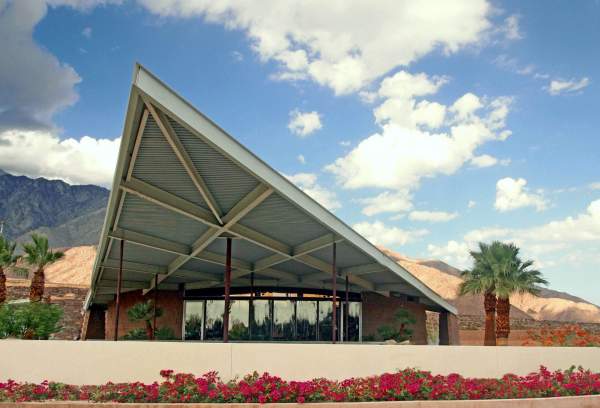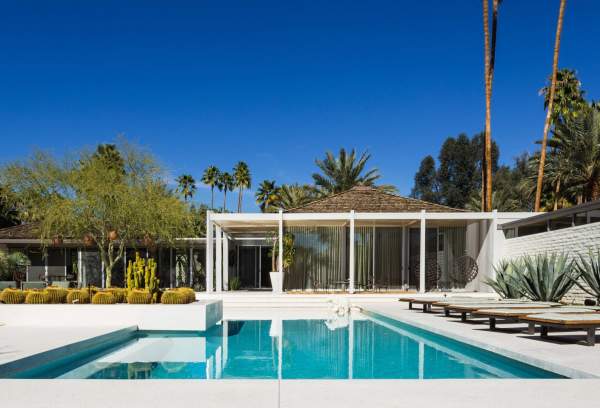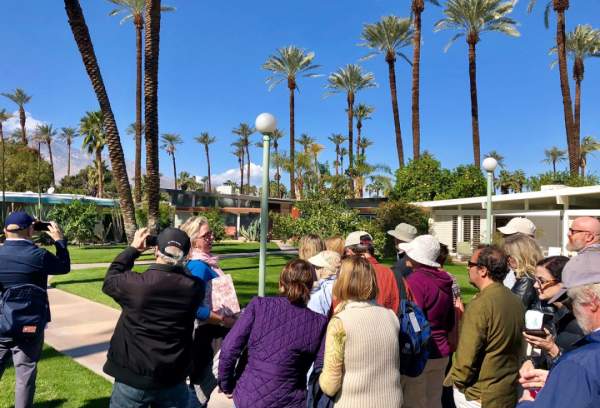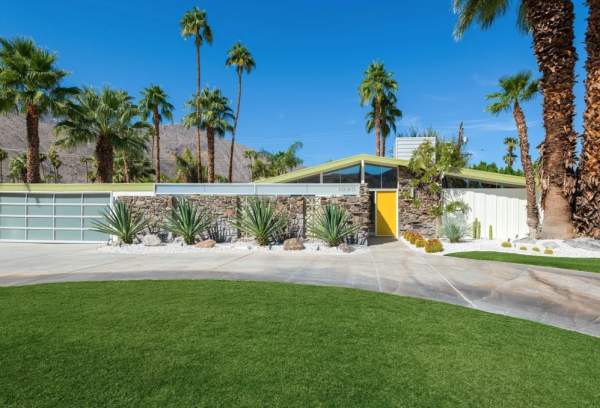Albert Frey didn’t just design buildings in Palm Springs — he helped invent the architectural language of desert modernism itself. Through an approach grounded in climate, landscape, and modernist restraint, Frey shaped a city whose identity remains inseparable from architecture. His work in Palm Springs transformed European modernist theory into a distinctly desert-responsive way of building that continues to define the town today.
Born in Zurich, Switzerland, in 1903, Frey trained in architecture before moving to Paris, where he worked in Le Corbusier's studio, one of the most influential figures of the modern movement. That experience exposed Frey to radical ideas about form, efficiency, and industrial materials — ideas he would later adapt, rather than replicate, in the California desert.
When work in Paris slowed, Frey immigrated to the United States. After arriving in New York, he joined architect Lawrence Kocher, then managing editor of Architectural Record, earning $25 a week during the depths of the Great Depression — a respectable wage at the time.
Early Modernist Foundations: Frey + Kocher
Frey and Kocher’s most significant early collaboration was the Aluminaire House (1930), a metal-and-glass structure constructed in fewer than ten days for the 1931 Architectural League Show in New York. Fully sheathed in ribbed aluminum, with steel-framed windows and built-in furniture, the house embodied modernism’s emphasis on efficiency, prefabrication, and new materials.
The house attracted enormous attention. More than 100,000 visitors toured it during the exhibition, and it was later included in the Museum of Modern Art’s landmark 1932 exhibition Modern Architecture: An International Exhibition, curated by Henry-Russell Hitchcock and Philip Johnson. That exhibition helped introduce modern architecture to a broad American audience and firmly placed Frey within the movement’s inner circle.
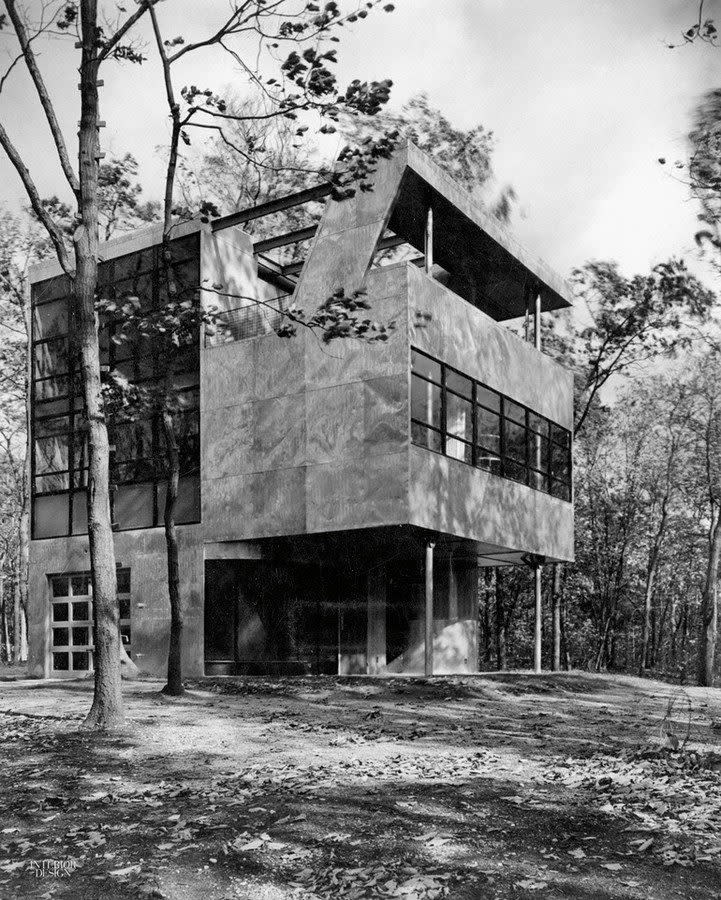
Read More about the Aluminaire House
Palm Springs and the Birth of Desert Modernism
A commission in the summer of 1934 changed the course of Frey’s career — and Palm Springs’ architectural future. Designing a dual-use office and apartment building on Palm Canyon Drive for Dr. J. J. Kocher brought Frey to Palm Springs for the first time. He immediately fell in love with the desert’s stark beauty, dramatic light, and rugged terrain.
This project marked the beginning of what would later be known as desert modernism — architecture that embraced climate, topography, and indoor-outdoor living rather than resisting them.
With limited work opportunities in New York, Frey remained in Palm Springs from 1935 to 1937, collaborating with John Porter Clark under the firm name Van Pelt and Lind Architects. Although neither architect was licensed in California at the time, their work helped establish the foundations of the city’s modern architectural identity.
After a brief return to New York in 1937 to work at the Museum of Modern Art, Frey returned permanently to Palm Springs in 1939. His professional partnership with Clark would continue for nearly two decades and produce some of the city’s most enduring civic and residential landmarks.
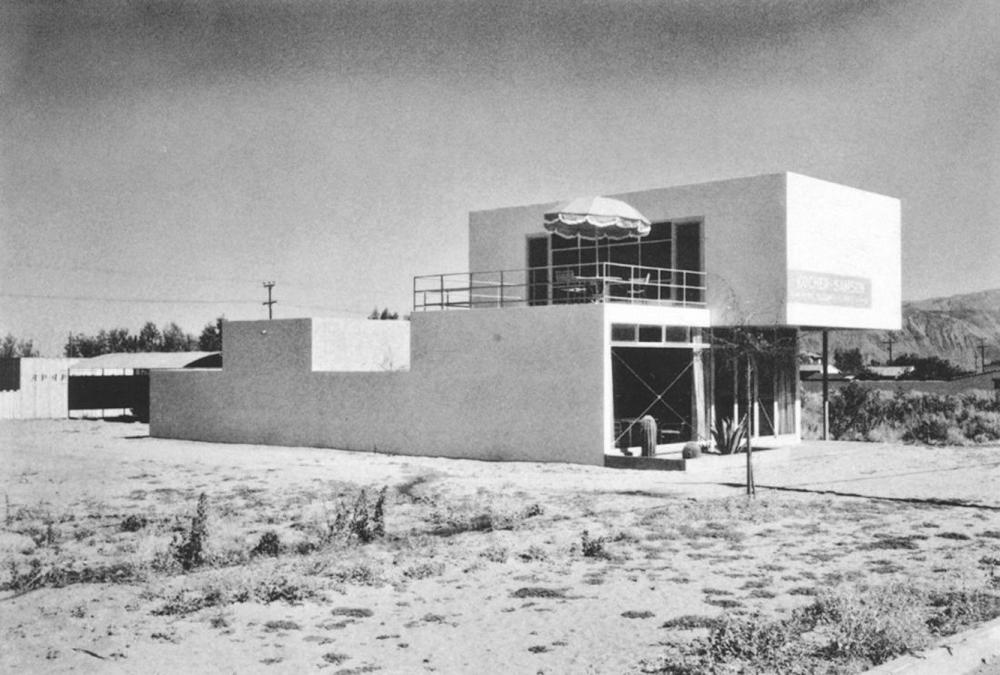
From Partnerships to Solo Work
His business partner, John Porter Clark, who had played a significant role in the development of the Village since the early 1930s, was commissioned as a First Lieutenant in the Army Engineering Corps in 1942 and was stationed with the Army Air Corps at Minter Field, near Bakersfield. Albert assumed responsibility for their office at 869 North Palm Canyon Drive during his absence. During this time, he also joined the board of the Palm Springs Desert Museum. At the end of 1956, Clark left the firm to establish a solo practice.
Albert remained interested in various building types, mainly residential, with which he was very familiar. He collaborated with Chambers. However, he decided to go solo when the Tramway Gas Station was completed under their partnership.
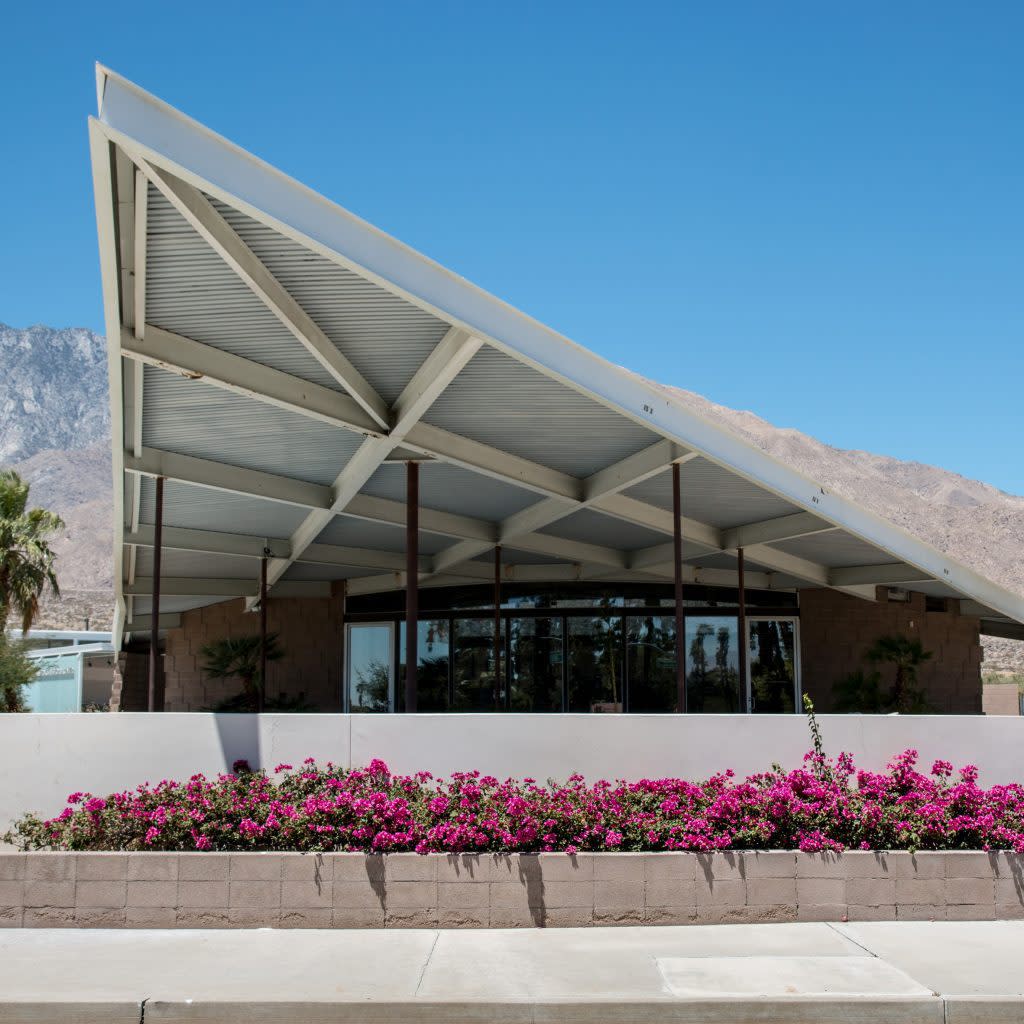
Tramway Gas Station, aka the Palm Springs Visitor Center (1965) - 2901 N Palm Canyon Dr
You can read more about the Visitor Center.
Solo Practice and Late Career
From 1966 until his retirement in the 1980s, Frey worked alone. His later commissions focused primarily on residential additions and renovations, particularly in Smoketree Ranch, where his sensitivity to scale and landscape remained evident.
Frey died in Palm Springs in 1998 at age 95 and is buried at Welwood Murray Cemetery, leaving a body of work that continues to shape the city’s identity.
Architecture as Philosophy
Albert Frey personified the qualities evident in his buildings: elegance, simplicity, streamlining, and quiet inventiveness. His personal aesthetic, from his restrained wardrobe palette to his minimalist lifestyle, reflected his belief that modernism was not merely a style, but a philosophy of living.
For Frey, good architecture was honest, efficient, and deeply connected to its environment, principles that resonate strongly in Palm Springs today.
Selected Works by Albert Frey in Palm Springs.
Kocher - Sampson Building (1934) - 766 North Palm Canyon
The Kellogg Studio (1936) - 321 West Vereda Sur. Altered.
The Mason House (1937) - 448 Cottonwood Road - Altered and became condominiums.
The Chaney Apartments (1939) - 275 East Tamarisk Road
Frey House I - (1940, demolished)
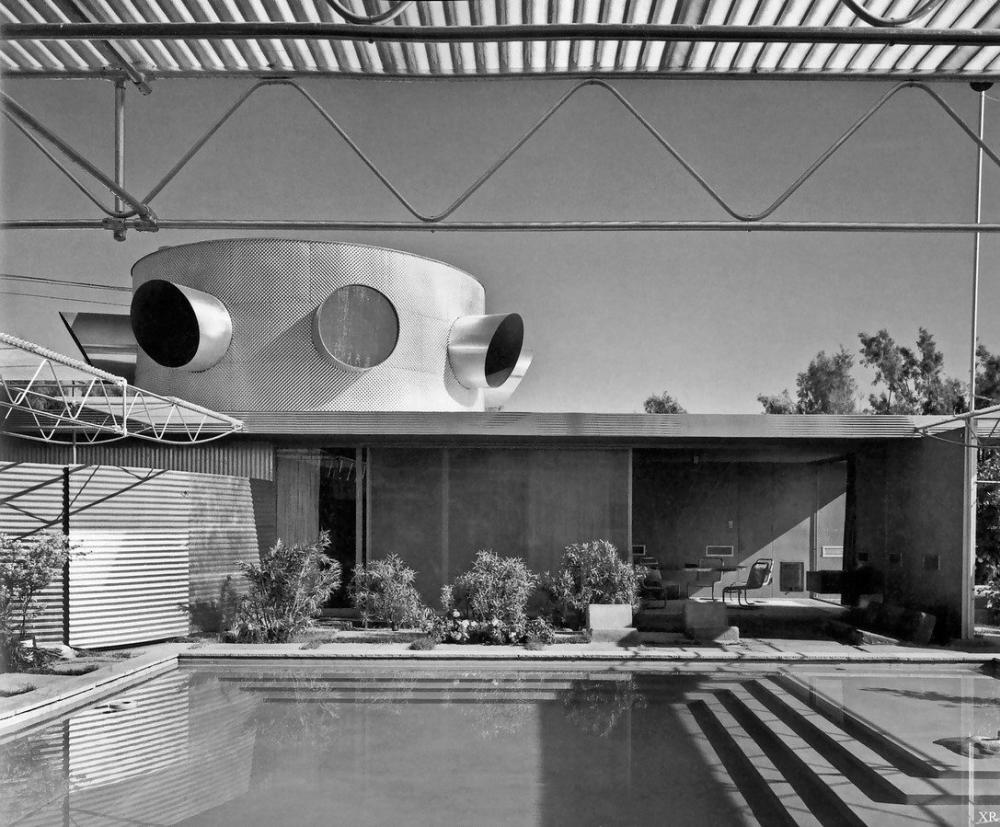
The Julian Sieroty House (1941) - 695 East Vereda Sur - Restored by Frey in 1989.
The Racquet Club Bungalows (1945) - 2743 North Indian Avenue
Villa Hermosa apartments (1946) - 155 Hermosa Place
The Colgan Apartments (1946) - 269 Chuckwalla Road - Name changed to Villa Orleans. 15 units.
The Raymond Loewy House (1946) - 600 West Panorama Road - Minor alterations.
Featured in LIFE Magazine, the home was built for industrial designer Raymond Loewy as his winter house in the Little Tuscany neighborhood. Loewy had designed logos for Coca-Cola, Frigidaire, Exxon, Lucky Strike, and Air Force One. Frey convinced Loewy that he could design a house that took advantage of an extensive boulder pile on the property that had been pushed there while constructing an adjacent road. It was designed in an L-shape with bedrooms and a bathroom on one wing and the living room, servants’ quarters, and kitchen on the other. Frey incorporated an unusual feature, featuring a large boulder and a portion of the swimming pool, into the space.
Richard Neutra was building the iconic Kaufmann House in the same year and in essentially the same neighborhood. They shared the same contractor.
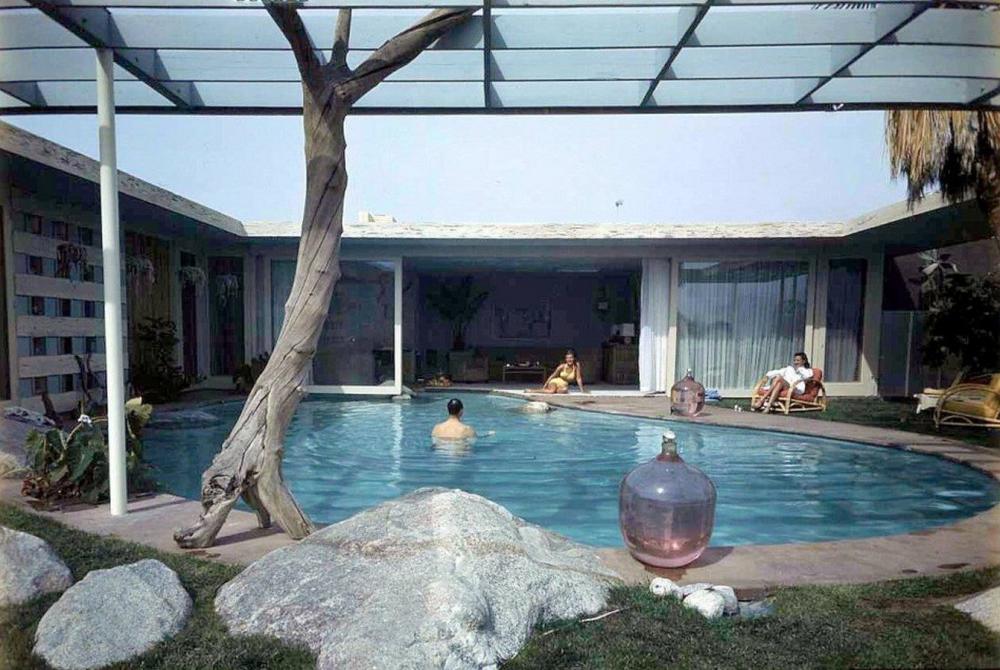
The Andrew and Anna Jergens House, aka Graceland West (1946), is at 845 West Chino Canyon. It was sold in 1960 to Ray Kroc, the McDonald's founder, and then in 1970 to Elvis Presley, who expanded it and recorded nine songs in the house.
Bel Vista Residence (1946) - 1164 North Calle Rolph
Sun View Estates Home (1950) is adjacent to Deep Well Ranch Estates, just east of Sagebrush Road on South Calle Rolph.
Palm Springs City Hall (1952 - 1957) - 3200 E Tahquitz Canyon Way - Palm Springs City Hall was one of Clark, Frey, and Chambers’ most important public buildings. Although a collaborative effort with the local architectural firm of Williams and Williams, the building’s initial phase was primarily the design work of John Porter Clark and Albert Frey. An unusual detail of the council chamber is its corner treatment, which consists of projecting concrete blocks cut diagonally at every other paired row, allowing the blocks to cast light and shadow.
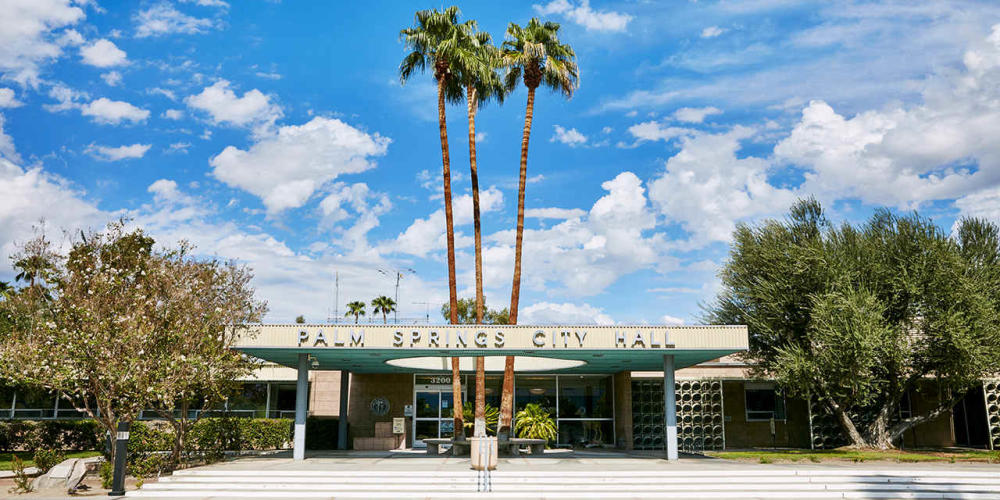
The Laura Carey House, aka the Carey-Pirozzi House (1956) - 651 West Via Escuela
The Frelinghuysen House (1959)—707 Panorama Road—There were alterations, followed by a restoration after 2000.
The Monkey Tree Hotel (1960) - 2388 E Racquet Club Rd
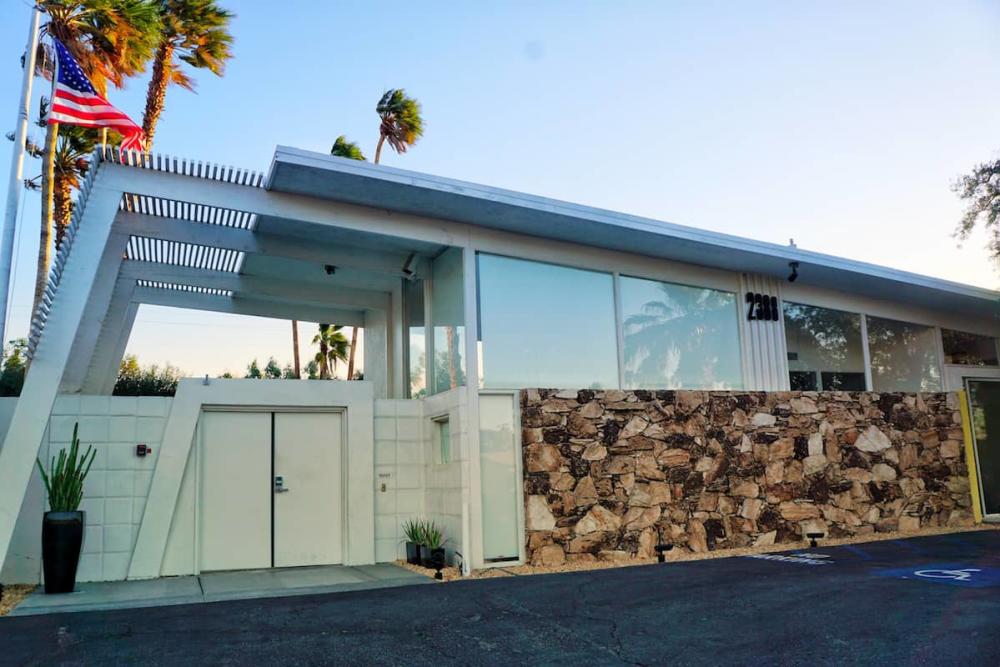
Palm Springs Aerial Tramway Valley Station (1963) - Palm Springs Aerial Tramway was a Frey and Chambers joint venture with Williams, Williams & Williams. John Porter Clark served as the coordinating architect. With E. Stewart Williams as lead designer, the Williams team was responsible for the upper tramway station evocative of a mountain chalet. The Tramway Valley station was designed by Frey using a New England-style covered bridge as its inspiration. The challenging location chosen for the valley station was a dry stream that could become a raging river at certain times of the year. Hence, Frey’s decision to straddle the stream with a building utilizing a structural truss design. He inserted glass between the trusses to provide spectacular views looking up the mountain.
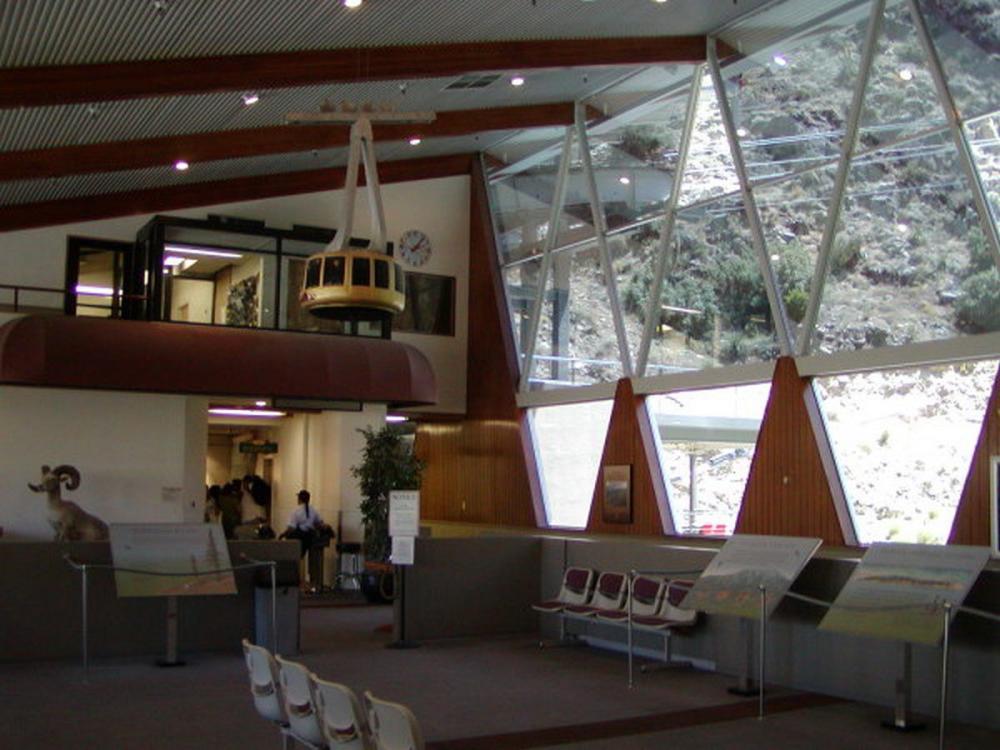
The Hugo Steinmeyer House (1962) - 318 Pablo Drive
Residence (1964) - 318 West Pablo Dr
Frey House II (1964) - 686 Palisades Drive - Learn more about this beautiful architectural gem - Book Your Visit.
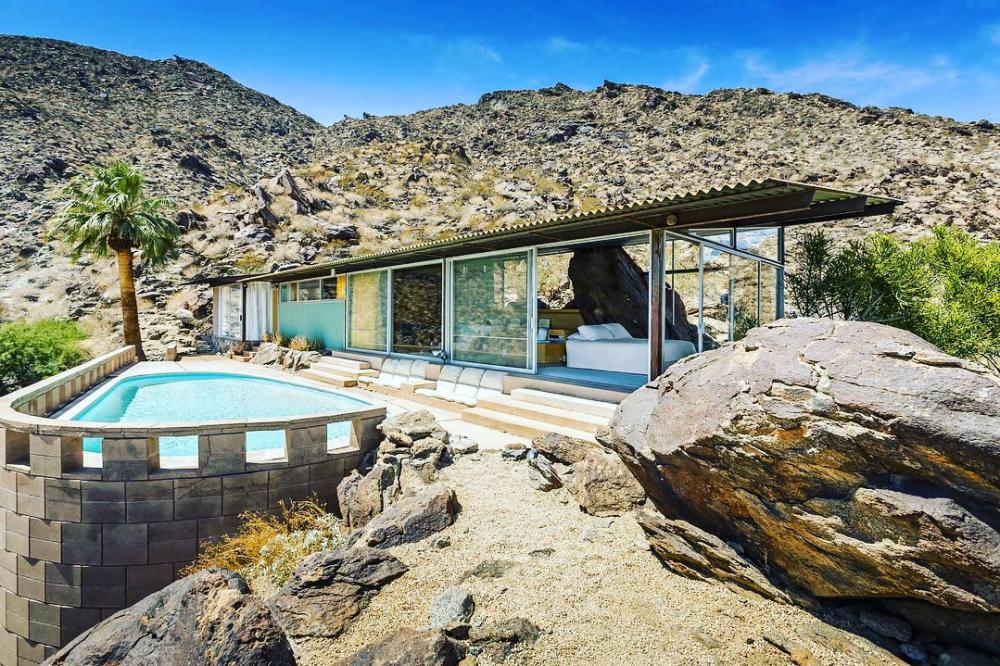
Frey House II
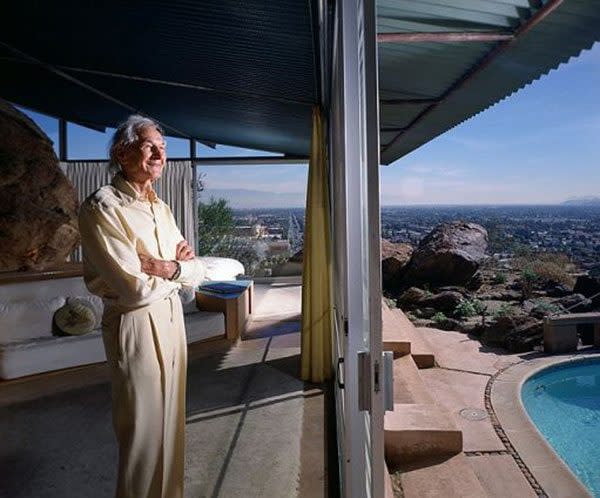
Albert Frey’s Legacy in Palm Springs
Albert Frey’s influence extends far beyond individual buildings. His work helped establish Palm Springs as an international destination for modern architecture — a city where design, landscape, and lifestyle intersect. Alongside contemporaries such as Richard Neutra, E. Stewart Williams, Charles Du Bois, and Howard Lapham, Frey shaped a legacy that continues to attract architects, historians, and visitors from around the world.
This article is part of the ongoing series, "Architects Who Built Palm Springs," which explores the designers whose visions transformed a desert town into a modernist landmark.
Palm Springs Architect – Charles Du Bois
Palm Springs Visitor Center
- 5 min read
A Historic Gem of Palm Springs Designed by Albert Frey The Palm Springs…
Architects Who Built Palm Springs: William Cody
- 10 min read
Desert Modernism, Resort Architecture, and the Postwar Transformation…
Best Palm Springs Tours: Explore Architecture, History, Nature, and Celebrity Homes
- 9 min read
Taking a Palm Springs tour is one of the best ways to experience…
Complete Guide to Modernism Week 2026
- 34 min read
Thursday, February 12 - Sunday, February 22 Palm Springs Modernism Week…
Palm Springs Modernism Week - October
- 6 min read
We look forward to you joining us for Modernism Week - October 2026…
